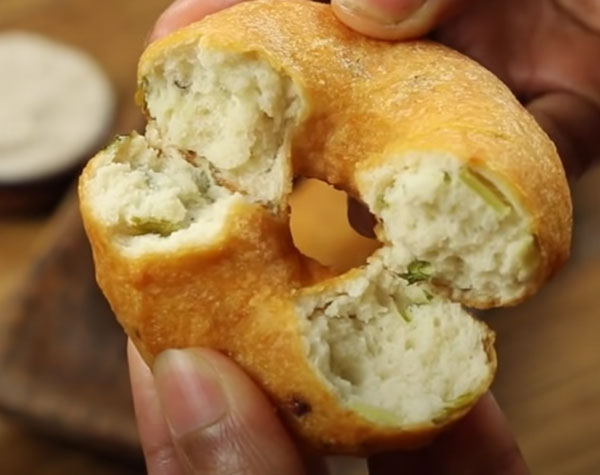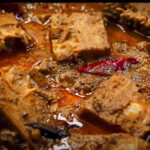
Polos maluwa/ambula recipe
August 3, 2024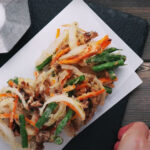
Vegetable Tempura (Kakiage)
August 5, 2024
Polos maluwa/ambula recipe
August 3, 2024
Vegetable Tempura (Kakiage)
August 5, 2024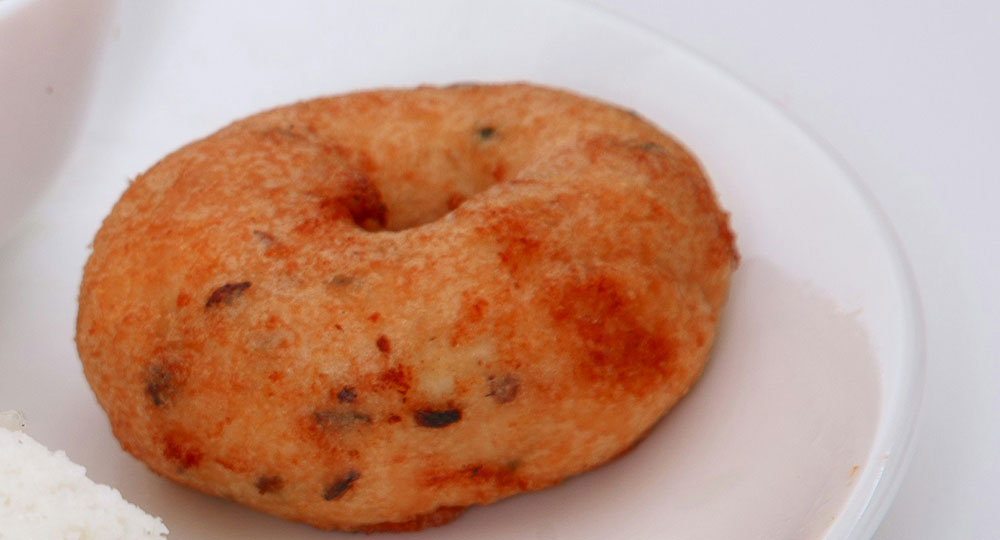
Ulundu Vade: A Gem in Vegetarian Recipes
For those who love exploring vegetarian recipes with authentic flavors and satisfying textures, ulundu vadai is a must-try! This classic South Indian snack, also known as ulundu vada, is a crispy, savory fritter made from urad dal (black gram). It’s a staple in South Indian cuisine and a favorite for its delicious taste and versatile use.
30 mins
Easy
Serves 4
Origins and Ingredients
Ulundu vadai has its roots in South Indian culinary traditions, where urad dal (black gram) is a staple ingredient. The dish’s history reflects the rich agricultural and culinary practices of the region, where lentils are a primary source of protein and flavor. The primary ingredient, urad dal, is soaked and ground into a smooth batter, which is then mixed with an array of spices and herbs. This batter is shaped into small discs and deep-fried to create a crunchy exterior and a soft, fluffy interior.
The preparation of ulundu vadai involves simple yet crucial ingredients, including urad dal, green chilies, onions, curry leaves, and cumin seeds. These elements not only enhance the flavor but also contribute to the dish’s nutritional value, making it a wholesome choice within vegetarian recipes.
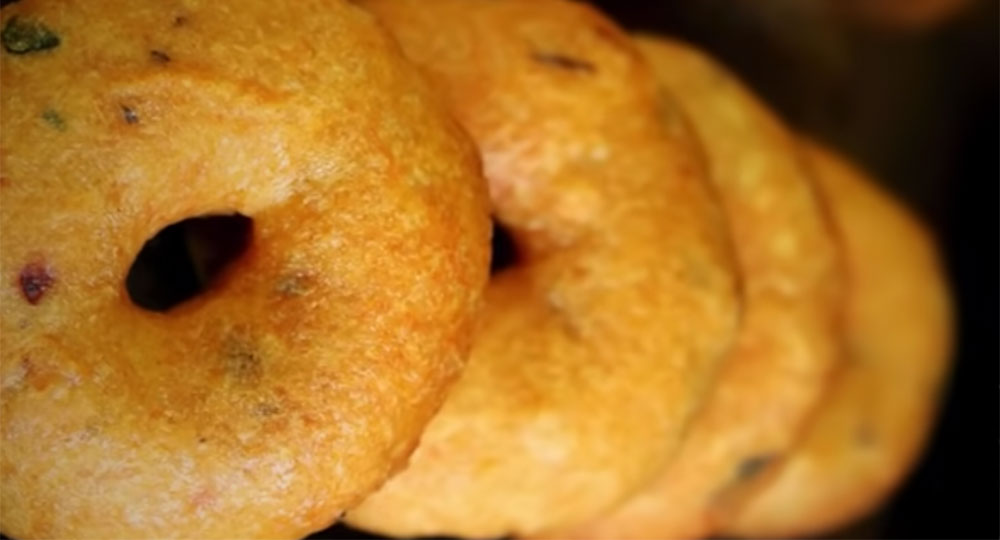
Preparation and Flavor Profile
Finding the right recipe for ulundu vadai involves understanding its preparation process. The urad dal is soaked for several hours to soften, making it easier to grind into a batter. The batter is then seasoned with finely chopped green chilies, onions, curry leaves, and cumin seeds, which impart a rich, savory flavor profile. The batter is shaped into round discs with a central hole, a traditional form that ensures even cooking.
Once shaped, the vadai is deep-fried until it achieves a golden-brown hue. This frying process creates a crispy outer layer that contrasts beautifully with the soft and airy interior. The result is a fritter that is both satisfying to eat and visually appealing, embodying the essence of traditional vegetarian recipes.
Cultural Significance
Ulundu vadai is more than just a delicious fritter; it holds significant cultural importance in South Indian cuisine. It is commonly prepared for special occasions, festivals, and family gatherings, reflecting the deep-rooted culinary traditions of the region. The dish’s presence at celebratory events underscores its role in bringing people together and honoring culinary heritage.
The preparation of ulundu vadai often involves family members working together, making it a symbol of communal effort and shared enjoyment. This cultural aspect adds depth to the dish, making it not only a culinary delight but also a meaningful part of social and cultural practices.
Nutritional Components of Ulundu Vadai
-
Protein: Urad dal, the main ingredient in ulundu vadai, is an excellent source of plant-based protein. Protein is essential for building and repairing tissues, and it also supports immune function and hormone production. A typical serving of ulundu vadai provides a significant amount of protein, making it a valuable addition to vegetarian diets.
-
Dietary Fiber: The high fiber content in urad dal contributes to improved digestive health. Dietary fiber helps regulate bowel movements, prevent constipation, and may reduce the risk of digestive disorders. Fiber also aids in maintaining healthy cholesterol levels and controlling blood sugar levels.
-
Essential Minerals:
- Iron: Urad dal is rich in iron, an essential mineral that plays a crucial role in forming hemoglobin and transporting oxygen throughout the body. Adequate iron intake helps prevent anemia and supports overall energy levels.
- Magnesium: This mineral is important for muscle and nerve function, bone health, and regulating blood pressure. It also supports metabolic processes and energy production.
- Potassium: Potassium helps balance fluid levels in the body, supports proper muscle and nerve function, and contributes to maintaining healthy blood pressure.
-
Vitamins and Antioxidants: While ulundu vadai itself is not a significant source of vitamins, the addition of ingredients like curry leaves, green chilies, and onions enhances its nutritional profile. Curry leaves are rich in antioxidants and vitamins like A, C, and B-complex, which help combat oxidative stress and support overall health. Green chilies provide vitamin C, which boosts the immune system and aids in the absorption of iron.
-
Healthy Fats: The frying process introduces fats into the dish. While deep-frying does increase the fat content, using a good quality oil can help reduce unhealthy fat intake. Opting for oils that are lower in saturated fats and higher in monounsaturated or polyunsaturated fats, such as canola or sunflower oil, can make the dish slightly healthier.
Nutritional Considerations
-
Caloric Content: Due to the deep-frying process, ulundu vadai is relatively high in calories. It’s important to enjoy it in moderation, especially if you are monitoring your caloric intake.
-
Balance with Other Foods: To ensure a balanced diet, ulundu vadai can be paired with nutrient-dense sides like coconut chutney and sambar, which provide additional vitamins, minerals, and dietary fiber. This balance helps offset the higher calorie and fat content of the fritter.
Summary
Ulundu Vadai/Vade/Vada/Wade Recipe for Cooking
Making ulundu vadai at home is straightforward and rewarding. Here’s a simple recipe to help you create this delicious fritter:
Ingredients:
- 1 cup urad dal
- 1-2 green chilies, finely chopped
- 1 small onion, finely chopped
- A few curry leaves, chopped
- 1 teaspoon cumin seeds
- Salt to taste
- Oil for frying
Instructions:
- Soak the Dal: Rinse the urad dal thoroughly and soak it in water for about 4 hours or overnight. Drain the water completely.
- Prepare the Batter: Grind the soaked urad dal into a smooth, thick batter. Add a little water if necessary to achieve the right consistency. Transfer the batter to a mixing bowl.
- Mix Ingredients: To the batter, add the chopped green chilies, onion, curry leaves, cumin seeds, and salt. Mix well to combine all the ingredients evenly.
- Shape and Fry: Heat oil in a deep frying pan over medium heat. Wet your hands and shape the batter into small discs with a hole in the center. Carefully slide them into the hot oil and fry until they are golden brown and crispy. Remove with a slotted spoon and drain on paper towels.
- Serve: Enjoy your ulundu vadai hot with coconut chutney, sambar, or a side of yogurt.
Final Thoughts
Ulundu vadai is a quintessential part of vegetarian recipes that brings together flavor, nutrition, and tradition in one delicious package. Its crispy exterior and soft interior make it a delightful treat that’s perfect for any occasion. Whether you’re looking to expand your vegetarian recipe repertoire or simply craving a tasty snack, ulundu vadai is sure to impress.
Give this classic South Indian fritter a try, and enjoy the taste of tradition with every bite!
